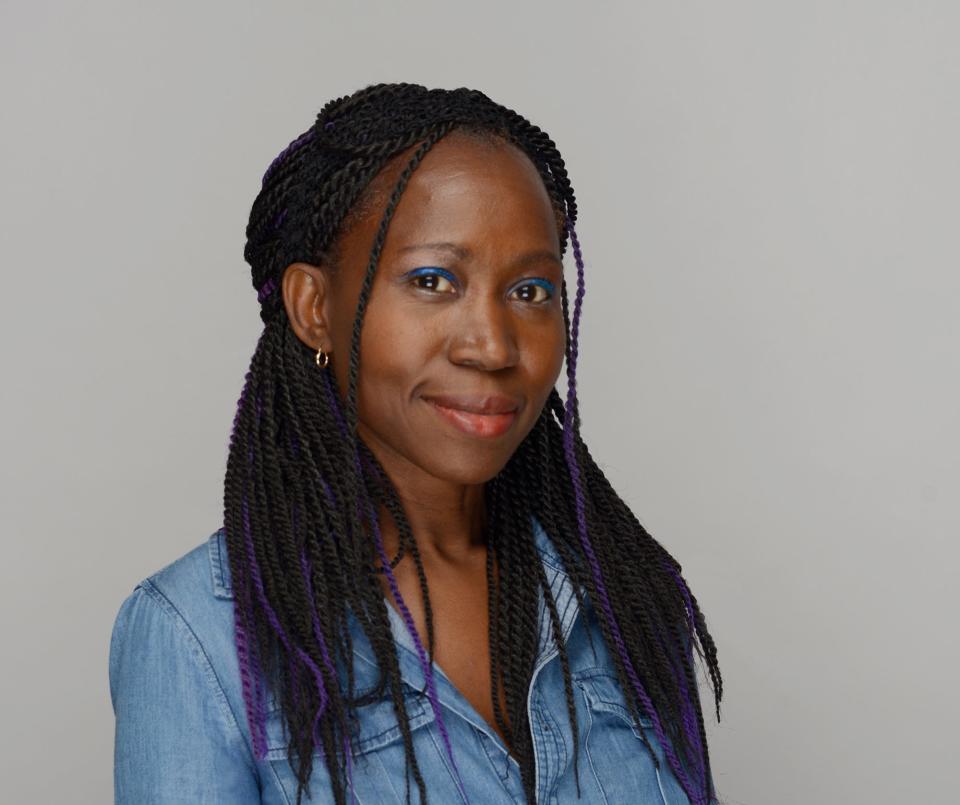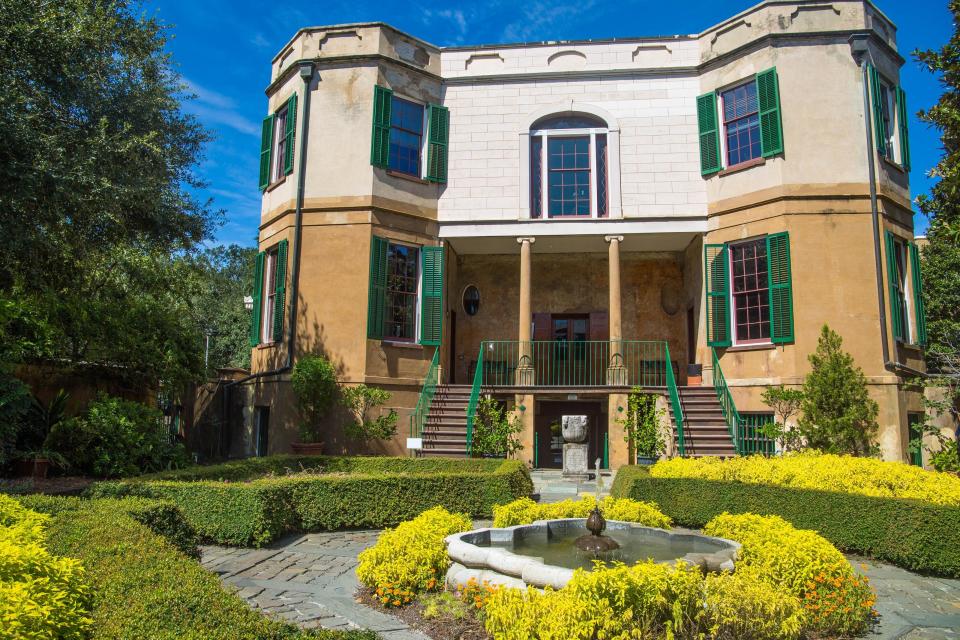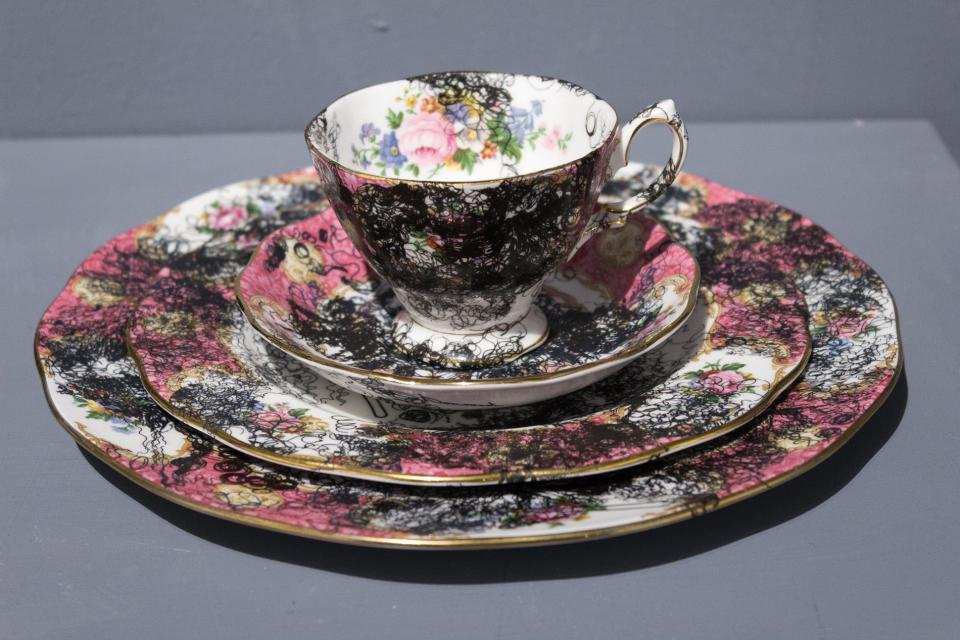Artist Sharon Norwood uses found objects to reveal hidden histories at Owens-Thomas House
Savannah is a storytelling city, but we often fail to dig deeper into those stories. It may seem easier to let old stories remain unquestioned, but that approach overlooks other perspectives. In the first contemporary artist spotlight at the Owens-Thomas House and Slave Quarters, Sharon Norwood’s site-specific ceramics and mixed media intervention investigates those underexplored perspectives and reveals a history hidden in plain sight.
“My work is pretty much me trying to figure out or understand the history of things, how one action after the other has led to this moment and what that means for all people,” Norwood said.“When I visit the space, this romantic idea of the South floats to the surface, so I wanted to highlight the ‘invisible’ labor as that unspoken stuff and the fact that it was a space of resistance in Black bodies.”

Norwood uses found objects and curly lines to bring those unstated things into conversation. The dark curls are incorporated into nearly every surface, from the glossy teacups to the saucer shattered on the floor. Diving deeper into these artifacts reveals a significant meaning behind these delicate loops.
“I think about curly, not straight, referencing the curls of the hair of Africans. I use the curly line in the porcelain tea cups, this precious item that has this particular history. Then it’s what happens when you marry this curly line, or this idea of Black bodies, to these other ideas,” Norwood said. “The curly line takes on an identity of myself as a Black woman, but I think it also speaks to a larger audience as well, other persons of color that recognize themselves in those curly lines.”
The curl is the intervention's most prevalent symbol, but it isn’t the only one. Gauzy white curtains filter sunlight through images lifted from wanted posters, giving the work a subtle backdrop. Copies of Toni Morrison’s “Beloved” and Harriet Beecher Stowe’s “Uncle Tom’s Cabin” are nestled on a side table, proudly displaying looping lines on their covers. An abstract, curled shape sits below a family portrait on the mantle, its gleaming black surface decked in black lace and gold finery.
Each detail poses new questions, reminding viewers that these relics are much more nuanced than they appear.
“These items are found objects, so they come with their own history,” Norwood explained.
Be Prepared: Braving the apocalypse one tabletop role-playing game at a time
Everything That Rises: Historic Flannery O'Connor Childhood Home reopens with new director at the helm

'That history makes its way to my work'
One example of this unique history is the Savannah Grey bricks stacked throughout the room. This industrial touch may feel out of place in such an ornate space, but the beautiful embellishments and rough reality are inseparable. Taking a closer look reveals fingerprints of the enslaved, a mark of the labor ingrained in the 19th-century home’s foundation.
“It's impossible to move to Savannah without reading or hearing about this history, and, as a Black person, not think about what that means, how that affects you,” Norwood said. “When we purchase a home, we find all those great books or that the home had this bar or restaurant that used to service the Black community, and it’s important to consider what that meant when Black folks couldn't have meals or shop on Broughton. These spaces are important, and that history makes its way to my work.”
This history enters new depths in “Broken,” an audio track played in the drawing room. Norwood created this audio to encourage viewers to think about the emotions and domestic labor of enslaved women responsible for cleaning those precious dishes. The result is a collection of crashing china and tinkling bells that creates a sense of quiet urgency that travels throughout the historic home, an echoing history that affects us more than we realize.
“[These sounds] fracture that passive way of looking so that we can realize that the information is all there if we try to unpack questions,” Norwood said. “I wanted to create something that challenges everyone that walks through the space and honors folks that lived in the space without becoming this very prescriptive thing.”

To create a more personal experience, Norwood brings multiple stories into conversation with one another and positions the viewer in the middle. When we find ourselves in the middle of these rich artifacts, we take a more active role. When we confront these hidden-in-plain-sight remnants of the past, we engage with more curiosity and, perhaps, find ourselves asking more questions.
The facts and artifacts of the matter are complex, and the process of making meaning out of them is equally as complex.
“It's something that happens in your head. It’s this conversation you're having with yourself where you have to unpack and maybe negotiate your own answers,” Norwood said.
“How” and “why” are a great starting place, but there’s also the question of where we go from here. Simply observing art isn’t always enough. The big questions should follow us home, challenging our perspectives on comp questions such as who we are and how the past impacts our modern lives.
It’s a big ask and one of Norwood’s driving forces.
“I just love making art. I get a chance to learn about myself, and I can do that through art. As an artist, the wonderful thing is that when you create something, it goes out and does its own thing,” Norwood said.
The pieces of this hidden history have always been there, and Norwood places them in conversation with one another to create a space of inquiry and rediscovery. From there, her work “does its own thing” by challenging viewers to connect with other experiences and see the world from a different perspective—which is precisely what creative storytelling does best.
If You Go >>
What: Telfair Museum's #ART912 Artist Talk with Sharon Norwood and curator Elyse Gerstenecker
When: 5:30 p.m., Aug. 8
Where: Jepson Center, 207 W. York St.
Cost: Free and open to the public
Info: telfair.org/event/sharon-norwood-artist-talk/
Norwood’s work will remain on view at the Owens-Thomas House & Slave Quarters through September 12.
This article originally appeared on Savannah Morning News: Telfair Museums hosts artist talk with Sharon Norwood

